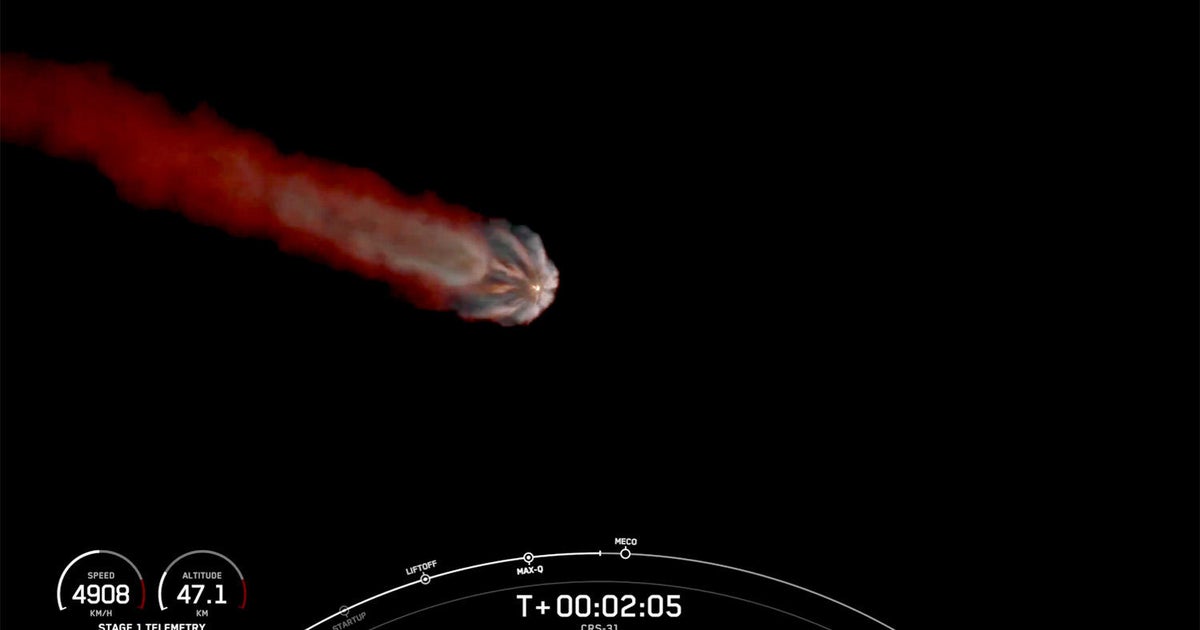CBS News
What to know about fluoride in water following RFK Jr.’s health claims

Robert F. Kennedy Jr.’s recent comments on fluoride are prompting questions about its safety and why it’s used in drinking water.
Kennedy, a former presidential candidate turned Trump supporter who has long shared anti-vaccine views, said on social media Saturday that Donald Trump would push to remove fluoride from drinking water on his first day in office if elected president. Trump has previously suggested he’d put Kennedy in charge of health initiatives.
On Sunday, Trump told NBC News he had not spoken to Kennedy about fluoride yet, “but it sounds OK to me. You know it’s possible.”
In a post on social media, Kennedy claimed fluoride is linked to a slew of health problems.
Why the fear over fluoride? Here’s what to know.
What is fluoride?
Fluoride is a mineral that helps strengthens teeth and reduces cavities, according to the U.S. Centers for Disease Control and Prevention. It does this by repairing and preventing damage to teeth caused by bacteria in the mouth that produce acid, which in turn dissolves minerals in a tooth’s surface and can even lead to tooth loss.
Tooth decay by itself can be painful and costly to treat but left untreated can cause further problems, including infections and abscesses or even sepsis, according to the World Health Organization.
Some research has also linked poor oral health to other complications such as cardiovascular disease due to inflammation and infection.
This is why experts urge prevention as the best way to keep your dental (and overall) health in check.
Why fluoride is in water and its health benefits
“Almost all water contains some naturally occurring fluoride, but usually at levels too low to prevent cavities,” the CDC’s website notes.
In 1950, federal officials endorsed water fluoridation — adding a small quantity of fluoride to the water supply — to prevent tooth decay. Fluoride can come from a number of sources, including most toothpaste brands, but researchers say drinking water is the main source for Americans.
“Studies continue to show that widespread community water fluoridation prevents cavities and saves money, both for families and the health care system,” the CDC says, noting that this step has reduced tooth decay in children and adults by about 25%.
Dr. Naomi Levy Goldman, cosmetic and restorative dentist and owner of Levy Goldman Dentistry, told CBS News that, at recommended levels, studies have shown drinking fluoridated water is “beneficial for preventing dental decay, especially in the first three years of life when the primary and permanent teeth are still developing.”
“Studies also show that consuming fluoridated water at the current recommended levels should not cause neurotoxicity or other adverse effects,” she said.
Is fluoride in drinking water safe?
The recommended fluoride concentration in drinking water is 0.7 milligrams of fluoride per liter of water, which is about equal to 3 drops in a 55-gallon barrel, according to the CDC.
In 2015, officials lowered the recommendation for drinking water fluoride levels to address fluorosis, a condition that can cause discoloration on teeth.
“The severity of the white spots (or fluorosis of the enamel) seems to increase with higher concentrations of fluoride,” Levy Goldman said. “One study noted about 12% of people would have some level of flourosis of the enamel from drinking fluoridated water at 1ppm.”
Overall, the addition of low levels of fluoride to drinking water is considered by health officials to be one of the greatest public health achievements of the last century.
“Seventy years of research, thousands of studies and the experience of more than 210 million Americans tell us that water fluoridation is effective in preventing cavities and is safe for children and adults,” according to the American Dental Association.
But it hasn’t gone without controversy.
Earlier this year, the National Institutes of Health’s toxicology program determined “with moderate confidence” that there is a link between higher levels of fluoride exposure and lower IQ in kids. The federal agency based its conclusion on studies involving fluoride levels at about twice the recommended limit for drinking water.
The American Academy of Pediatrics has questioned the validity of the NIH’s report, saying other reviews have come to different conclusions about fluoride’s risks and benefits. The AAP is among the expert groups that continue to recommend using fluoride toothpaste, in combination with fluoridated water, to protect teeth from cavities.
U.S. District Judge Edward Chen later cited the NIH study in ordering officials to further regulate fluoride in drinking water.
While the judge was careful to say that his ruling “does not conclude with certainty that fluoridated water is injurious to public health,” he said that evidence of its potential risk was now enough to warrant forcing the Environmental Protection Agency to take action.
Critics have cited near-universal adoption of fluoride toothpaste and other dental products as evidence that the chemical no longer needs to be added to drinking water. Other countries abroad have cut cavity rates without adding it to their water supplies, they argue.
The CDC has said that continued water fluoridation is still the “most cost-effective method of delivering fluoride to all members of the community regardless of age, educational attainment, or income level.”
CBS News has reached out to the American Dental Association for commentary.
Alexander Tin and
contributed to this report.
CBS News
11/4: The Daily Report – CBS News

Watch CBS News
Be the first to know
Get browser notifications for breaking news, live events, and exclusive reporting.
CBS News
11/4: America Decides – CBS News

Watch CBS News
Be the first to know
Get browser notifications for breaking news, live events, and exclusive reporting.
CBS News
Cargo ship launched to space station with supplies, science gear and holiday treats for crew

SpaceX launched an unpiloted Dragon cargo ship Monday evening, an election eve flight to deliver three tons of crew supplies, science gear and other equipment to the International Space Station, including an unusual wooden satellite, a solar wind monitor and holiday fare for the lab’s crew.
The Dragon’s Falcon 9 rocket blasted off from historic launch pad 39A at the Kennedy Space Center at 9:29 p.m. EST, lighting up the night sky for miles around as it climbed away atop 1.7 million pounds of thrust.
NASA/SpaceX
After boosting the rocket out of the dense lower atmosphere, the first stage, making its fifth flight, peeled away, reversed course and headed back to an on-target landing at the Cape Canaveral Space Force Station while the second stage continued the climb to space.
The landing marked SpaceX’s 57th successful booster recovery at the Florida Space Force station and its 363rd overall, including California flights and droneship landings.
Spaceflight Now
Just under 10 minutes after liftoff, the vacuum-optimized engine powering the Falcon 9’s second stage shut down and one minute later, the Dragon was released to fly on its own. If all goes well, it will catch up with the space station Tuesday morning and move in for docking at the lab’s forward port at 10:15 a.m.
One of the first items on the agenda is a test Friday to determine the Cargo Dragon’s ability to boost the space station’s orbit slightly using its aft-facing thrusters. The ISS is routinely re-boosted by Russian Progress freighters and Northrop Grumman Cygnus cargo ships, but Friday’s test will be a first for SpaceX.
The California rocket builder is under contract to NASA to build a powerful space tug of sorts that can be used to safely drive the ISS back into the atmosphere when the lab complex is retired in the 2030 timeframe. The vehicle is needed to make sure the station breaks up over a stretch of ocean well away from populated areas and shipping lanes.
During the test Friday, the Cargo Dragon’s aft thrusters will fire for about 12 minutes.
“The data that we’re going to collect from this reboost and attitude control demonstration will be very helpful, informing SpaceX analyses on how the system performs,” said Jared Metter, SpaceX director of flight reliability. “This data is going to lead to future capabilities, namely the US de-orbit vehicle.”
Reboost aside, the Cargo Dragon is loaded with slightly more than 6,000 pounds of equipment and supplies, including 2,022 pounds of science gear, 2,119 pounds of crew clothing, food and other supplies, 377 pounds of spacewalk equipment, 525 pounds of space station hardware and 44 pounds of computer equipment.
One of the more unusual payloads: Lignosat, a small wooden satellite using a framework of magnolia panels built by researchers at Kyoto University in Japan and the Tokyo-based logging company Sumitomo.
STR/JIJI PRESS / AFP via Getty Images
“While some of you might think that wood in space seems a little counterintuitive, researchers hope that this investigation demonstrates that a wooden satellite can be more sustainable and less polluting for the environment than conventional satellites,” said Meghan Everett, the ISS deputy project scientist.
“The main objective here is to determine whether wood can be used in space, and to do this, researchers will measure the temperature and strain of the wooden structure and see how it might change in the vacuum environment of space with atomic oxygen and radiation conditions as well.”
As with all station-bound Dragon cargo ships, the crew supplies include fresh food and special treats for holiday meals.
Bill Spetch, ISS operations and integration manager, said the “food kit” includes “citrus, apples, sweet onions, blueberries, radishes, etc,” along with lobster, crab and quail for holiday meals. A variety of cheeses is on board as well as fresh coffee and personal items requested by each crew member.
Mounted in the Dragon’s unpressurized trunk section is the Coronal Diagnostic Experiment, or CODEX, an instrument that will be mounted outside the space station to learn more about how charged particles in the solar wind are heated to millions of degrees and accelerated to enormous velocities, affecting Earth’s space environment and the rest of the solar system.
Inside the station, the astronauts will have a variety of new experiments and instruments to operate and monitor, including one called ARTEMOSS that will examine how Antarctic moss tolerates the space radiation and microgravity environment to learn more about how plants might be used in future life support systems.
The European Space Agency is sending up a space exposure experiment to learn more about how high-tech materials respond to prolonged exposure to the weightless environment and another experiment to study how organic samples degrade when exposed to unfiltered ultraviolet light from the sun.
And in an experiment that could be particularly useful to future astronauts, a small device known as Nanolab Astrobeat, provided by the Malta College of Arts, Science and Technology, will test cold welding technology that could prove useful for repairing leaks or other damage from inside a spacecraft.
The Cargo Dragon is expected to remain docked at the space station for about a month before it returns to Earth with station components needing refurbishment, trash and other no-longer-needed items.











